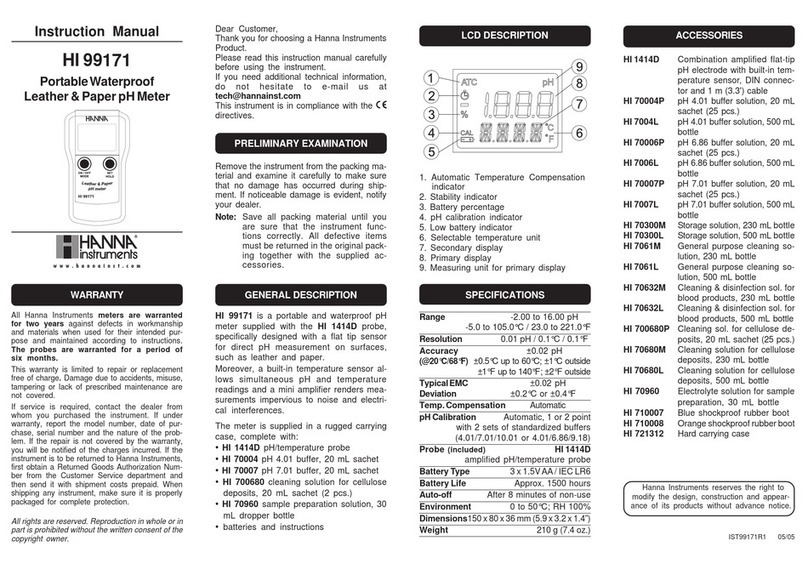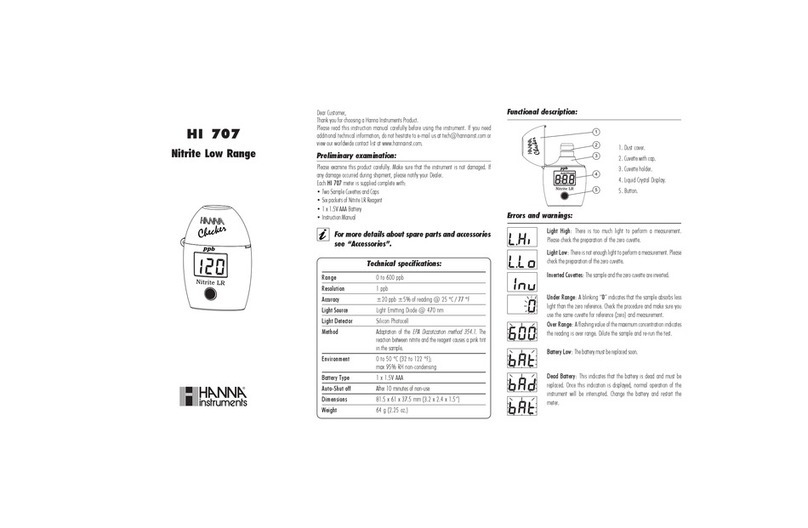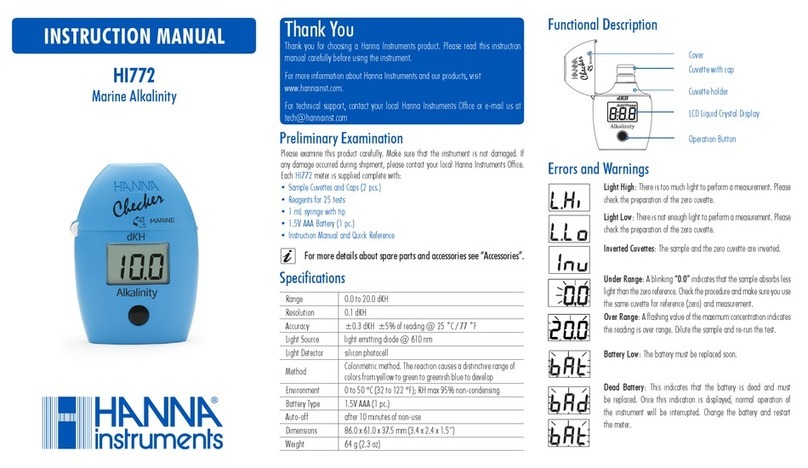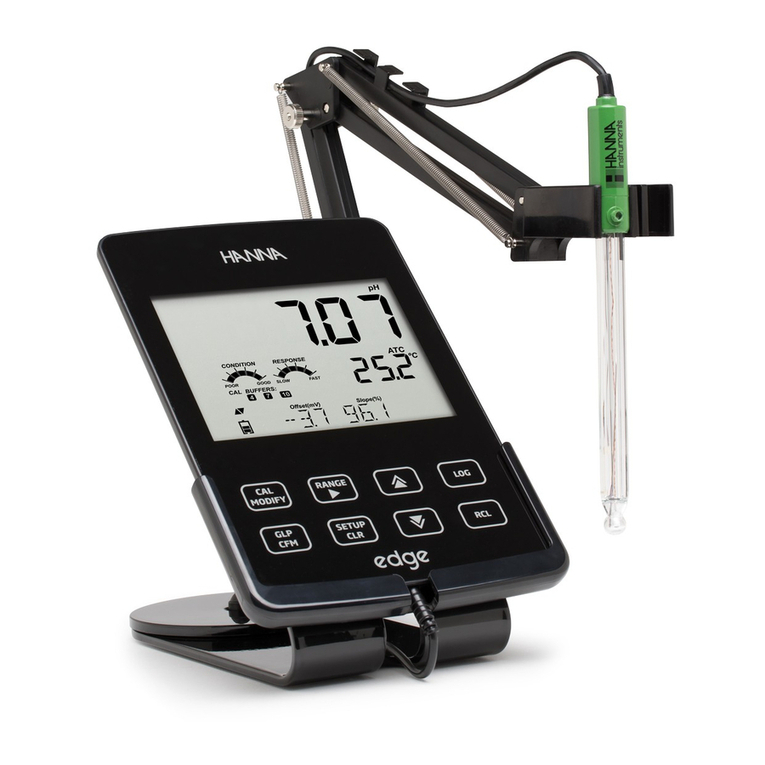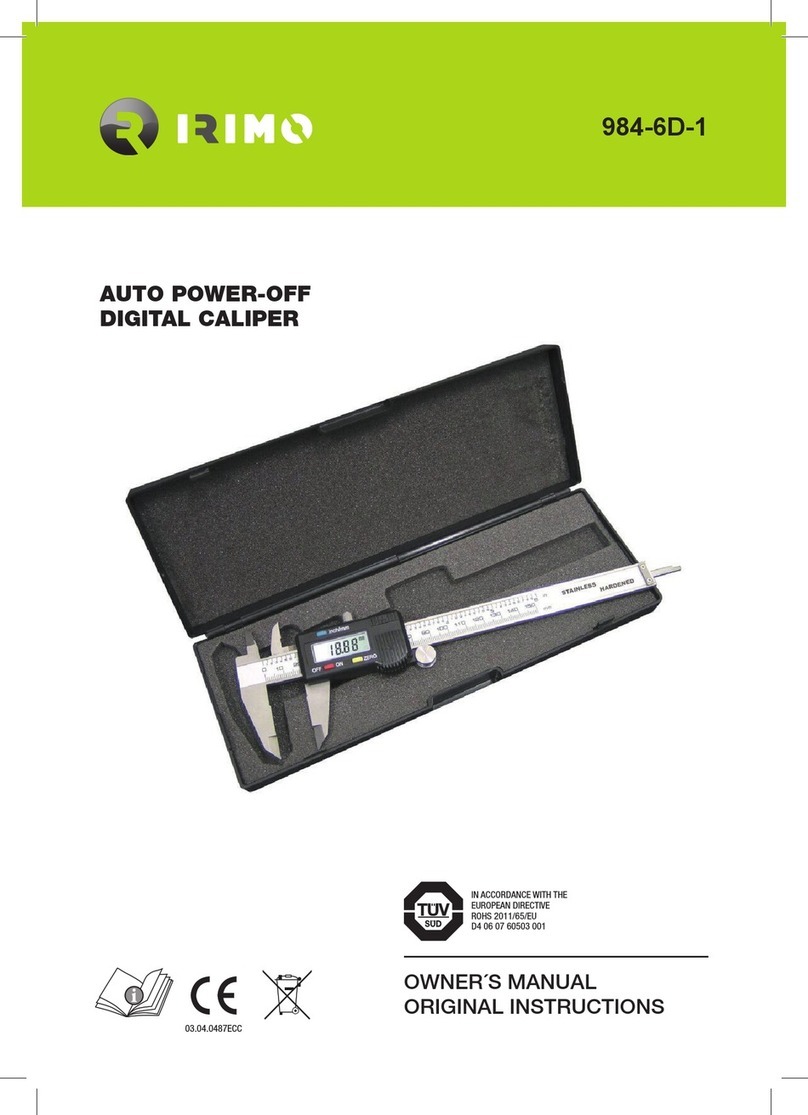Hanna Instruments HI96711C User manual
Other Hanna Instruments Measuring Instrument manuals
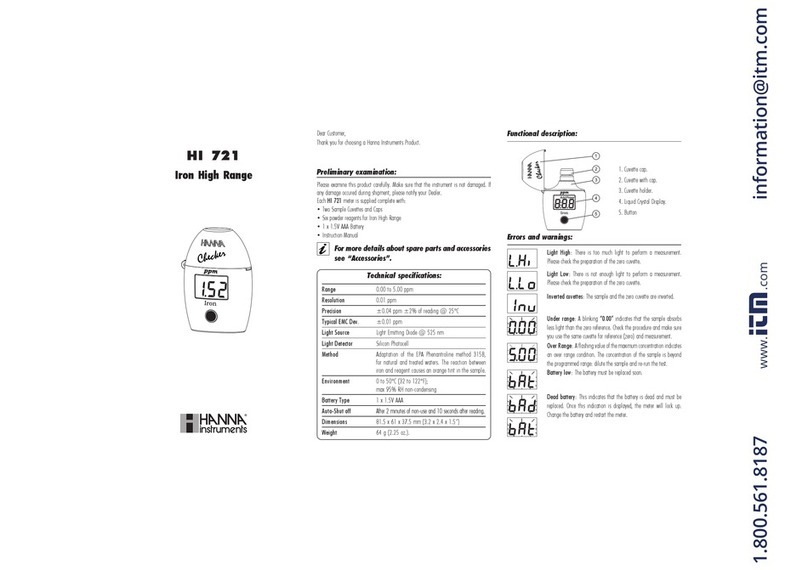
Hanna Instruments
Hanna Instruments Checker HI 721 User manual
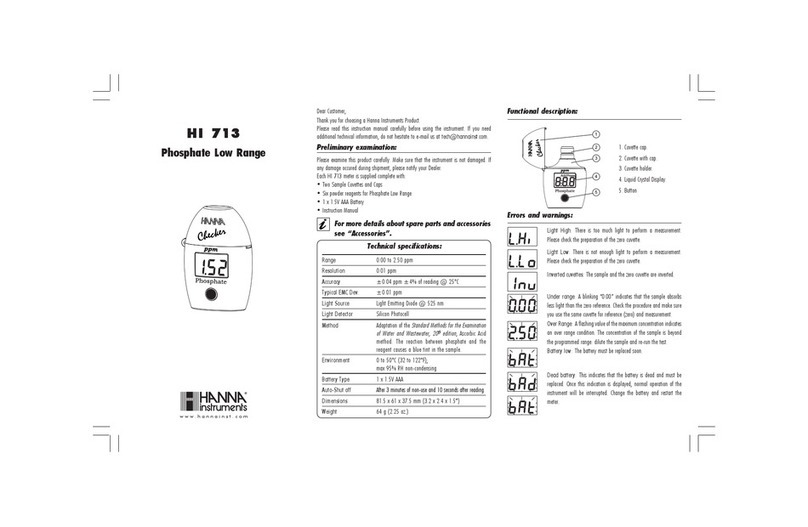
Hanna Instruments
Hanna Instruments HI 713 User manual
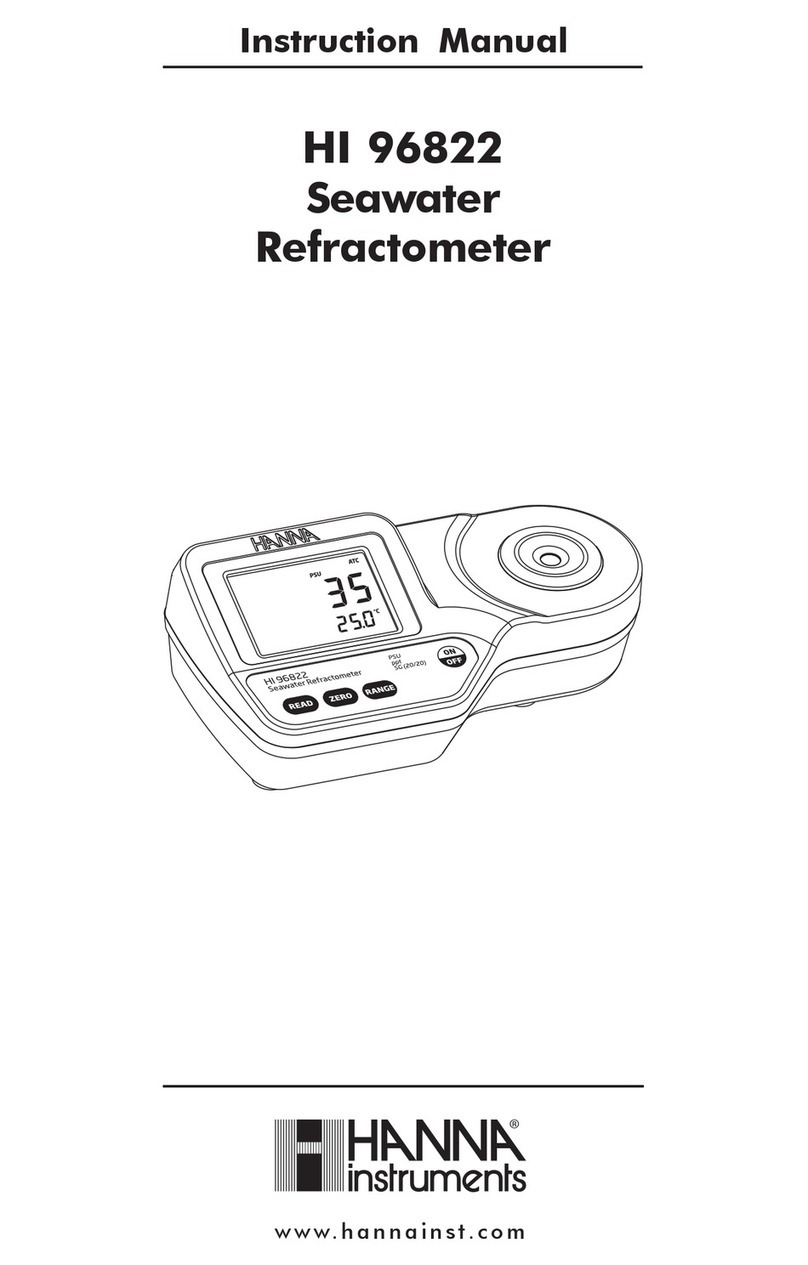
Hanna Instruments
Hanna Instruments HI 96822 User manual
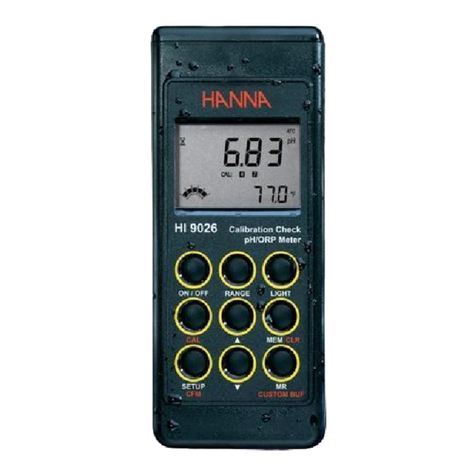
Hanna Instruments
Hanna Instruments HI 9026 User manual
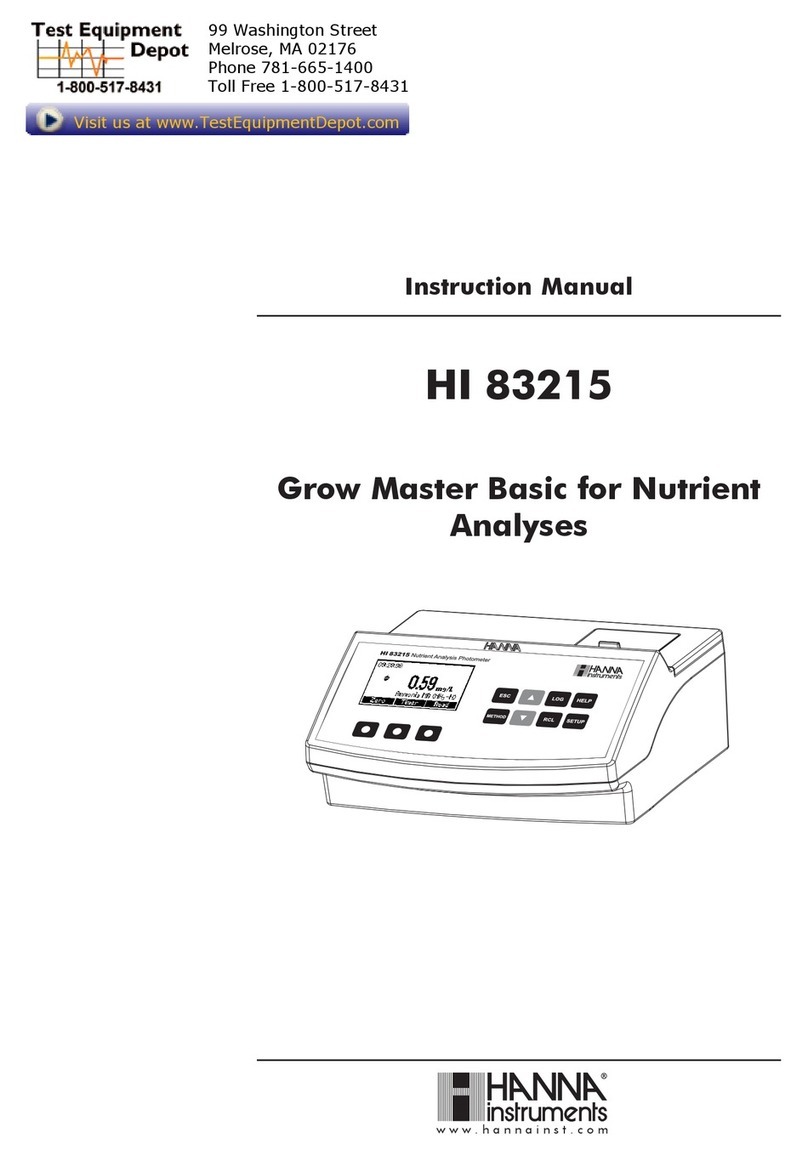
Hanna Instruments
Hanna Instruments HI 83215 User manual
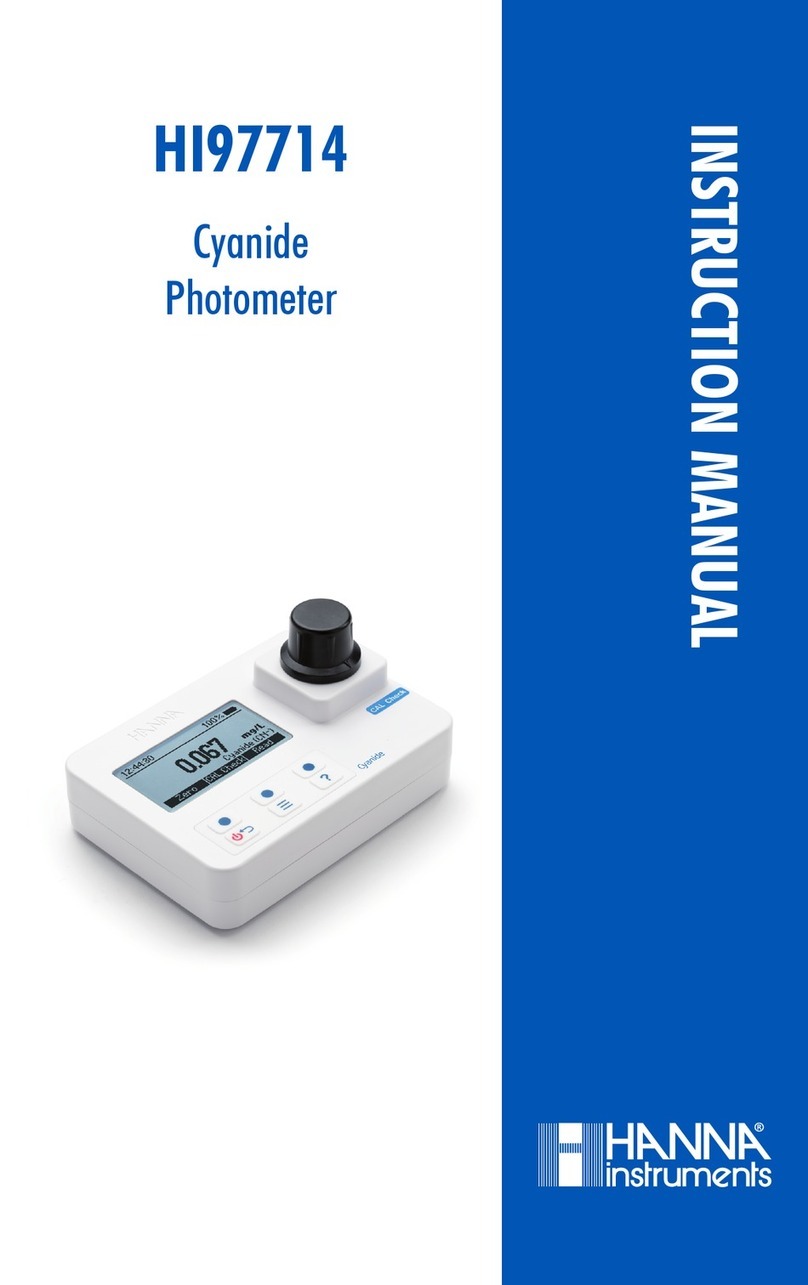
Hanna Instruments
Hanna Instruments HI97714 User manual
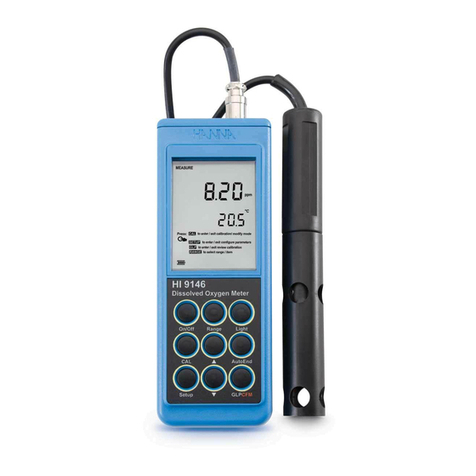
Hanna Instruments
Hanna Instruments HI 9146 User manual
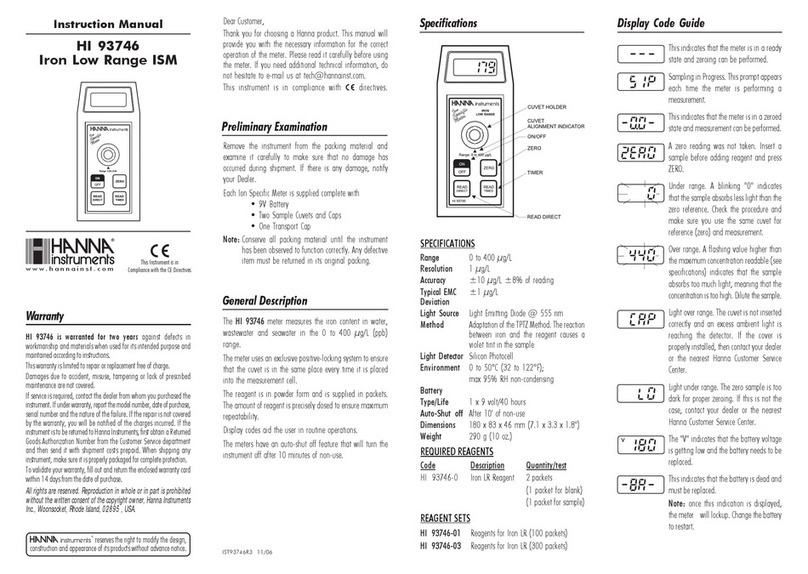
Hanna Instruments
Hanna Instruments HI 93746 User manual
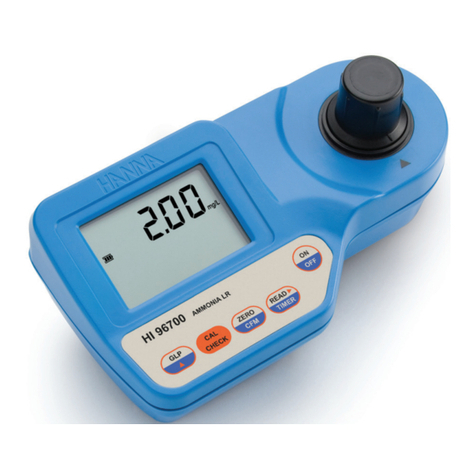
Hanna Instruments
Hanna Instruments HI96700C User manual
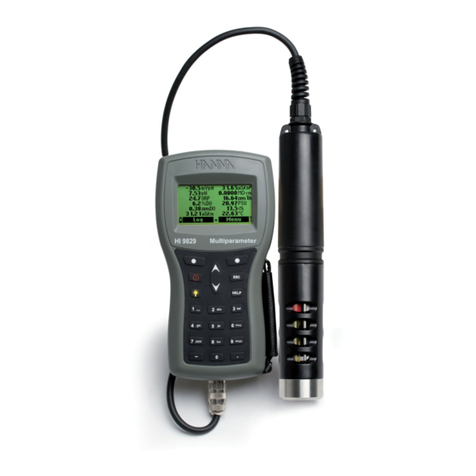
Hanna Instruments
Hanna Instruments HI 9829 User manual
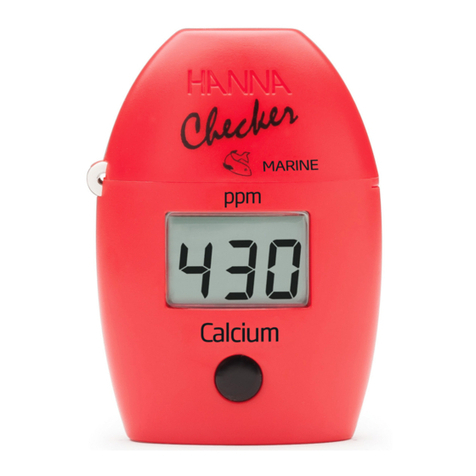
Hanna Instruments
Hanna Instruments HI 758 User manual
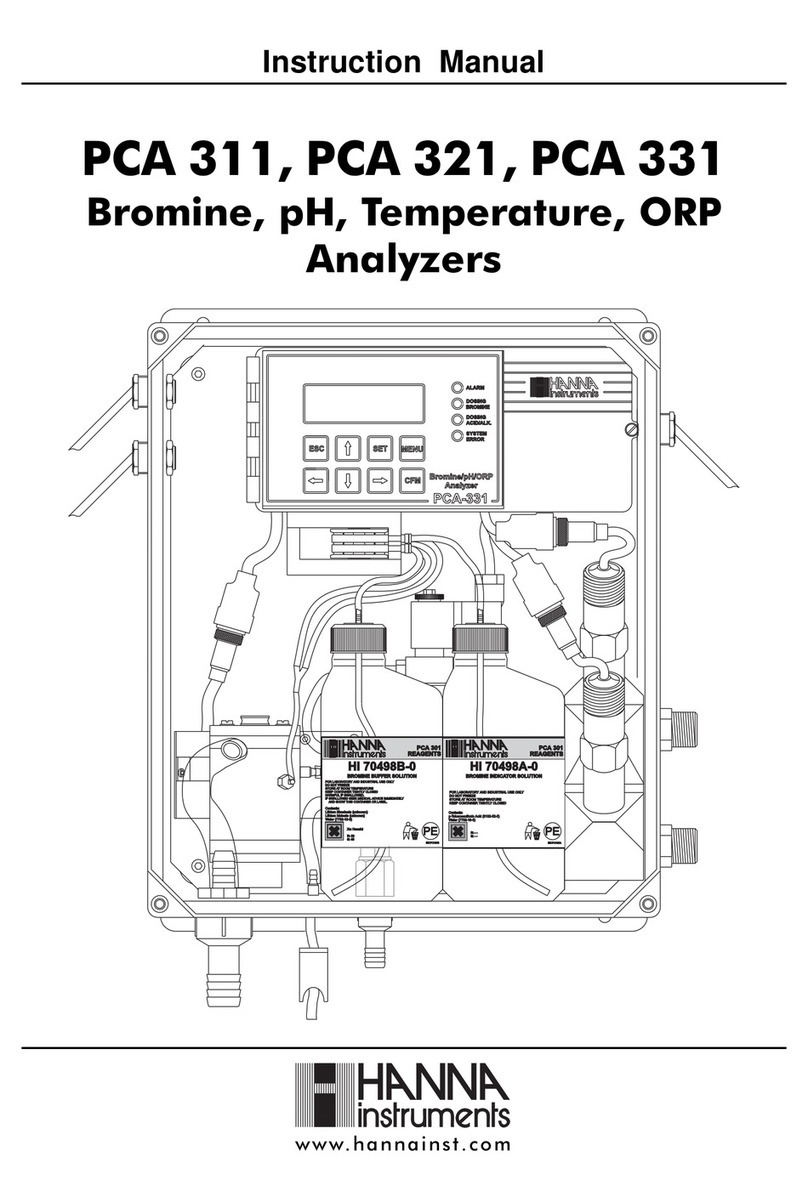
Hanna Instruments
Hanna Instruments PCA 311 User manual
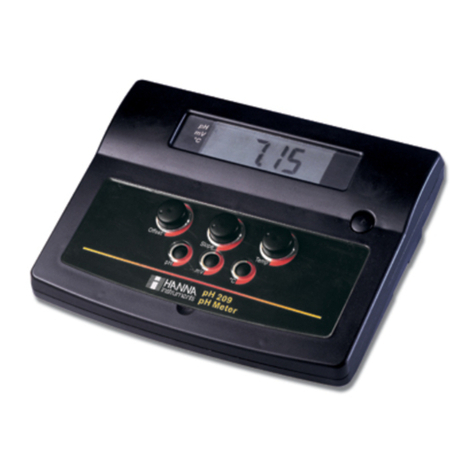
Hanna Instruments
Hanna Instruments pH 209 User manual
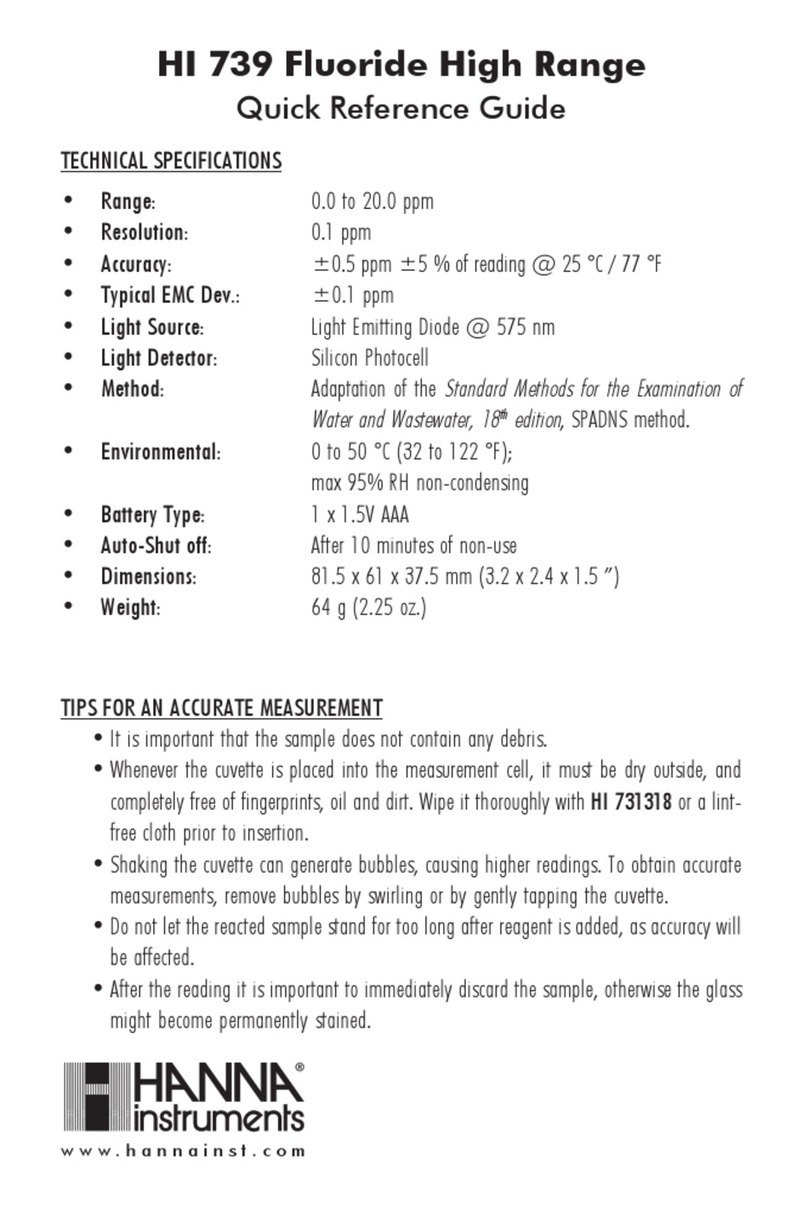
Hanna Instruments
Hanna Instruments HI 739 User manual
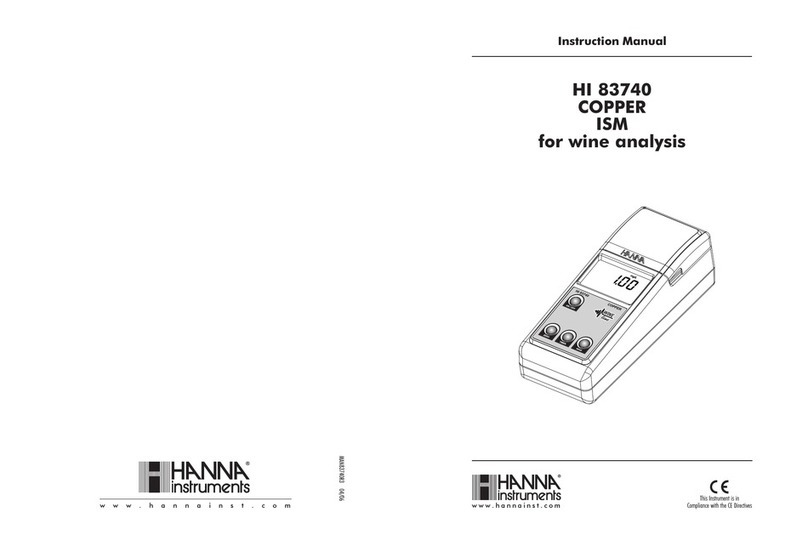
Hanna Instruments
Hanna Instruments HI 83740 User manual

Hanna Instruments
Hanna Instruments HI 747 User manual
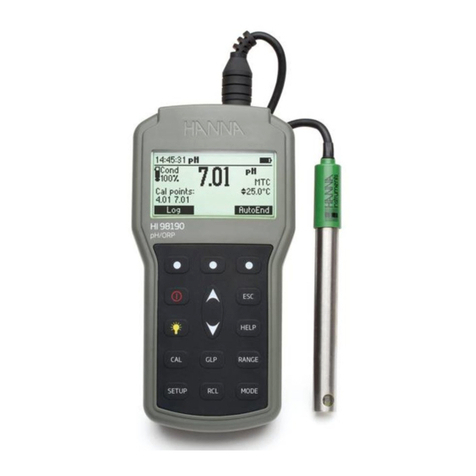
Hanna Instruments
Hanna Instruments HI98190 User manual
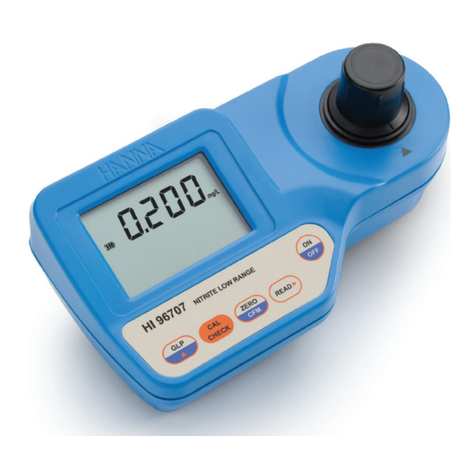
Hanna Instruments
Hanna Instruments HI96707 User manual
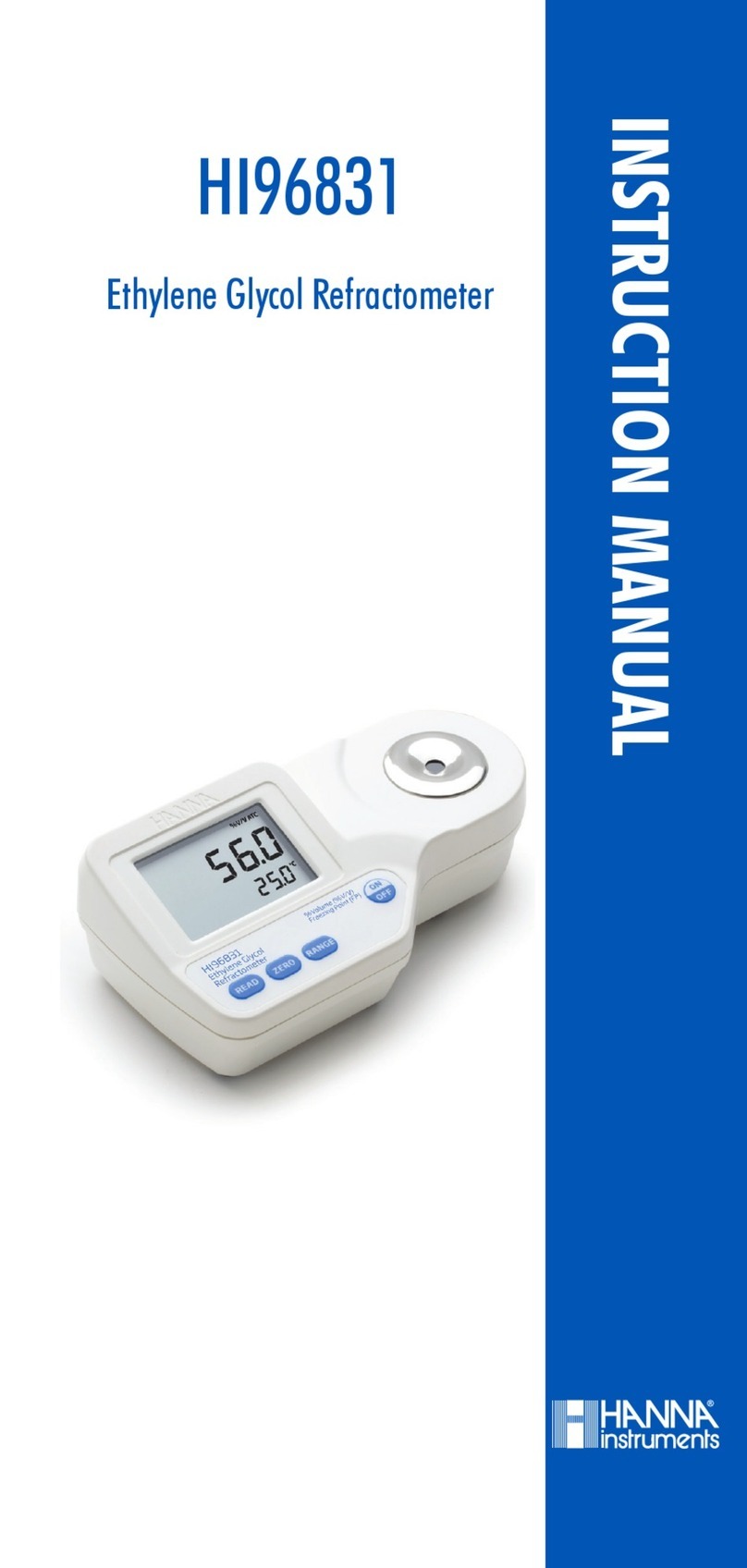
Hanna Instruments
Hanna Instruments HI 96831 User manual
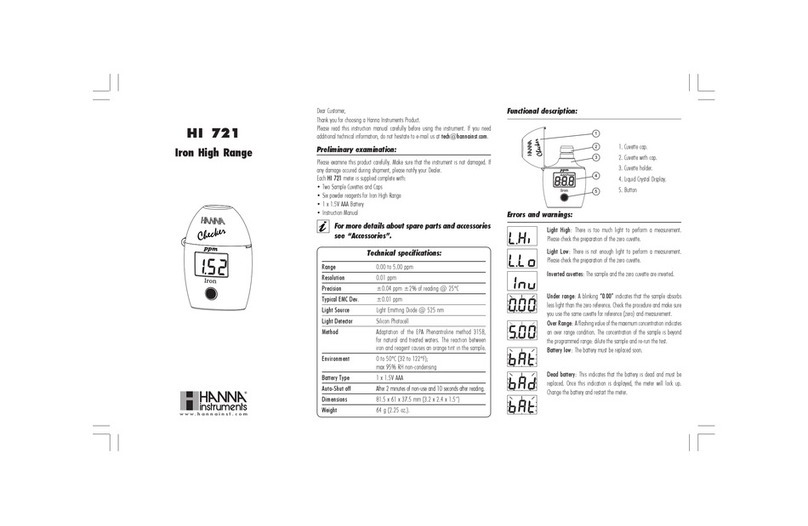
Hanna Instruments
Hanna Instruments HI 721 User manual
Popular Measuring Instrument manuals by other brands

Powerfix Profi
Powerfix Profi 278296 Operation and safety notes

Test Equipment Depot
Test Equipment Depot GVT-427B user manual

Fieldpiece
Fieldpiece ACH Operator's manual

FLYSURFER
FLYSURFER VIRON3 user manual

GMW
GMW TG uni 1 operating manual

Downeaster
Downeaster Wind & Weather Medallion Series instruction manual

Nokeval
Nokeval KMR260 quick guide

HOKUYO AUTOMATIC
HOKUYO AUTOMATIC UBG-05LN instruction manual

Fluke
Fluke 96000 Series Operator's manual

Test Products International
Test Products International SP565 user manual

General Sleep
General Sleep Zmachine Insight+ DT-200 Service manual

Sensa Core
Sensa Core Lacto Spark user manual
